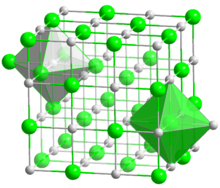Sodium compounds
Sodium atoms have 11 electrons, one more than the stable configuration of the noble gas neon.
[4] The thermal, fluidic, chemical, and nuclear properties of molten sodium metal have caused it to be one of the main coolants of choice for the fast breeder reactor.
[5] Sodium compounds are of immense commercial importance, being particularly central to industries producing glass, paper, soap, and textiles.
[7] In compounds, sodium is usually ionically bonded to water and anions and is viewed as a hard Lewis acid.
The reaction produces caustic soda (sodium hydroxide) and flammable hydrogen gas.
[12] Sodium tends to form water-soluble compounds, such as halides, sulfates, nitrates, carboxylates and carbonates.
The main aqueous species are the aquo complexes [Na(H2O)n]+, where n = 4–8; with n = 6 indicated from X-ray diffraction data and computer simulations.
[16] Sodium content of samples is determined by atomic absorption spectrophotometry or by potentiometry using ion-selective electrodes.
Because of the high polarity of the C-Na bonds, they behave like sources of carbanions (salts with organic anions).
[24] Sodium forms alloys with many metals, such as potassium, calcium, lead, and the group 11 and 12 elements.


